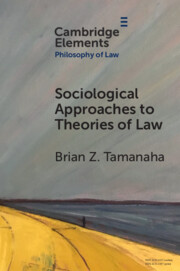Element contents
Sociological Approaches to Theories of Law
Published online by Cambridge University Press: 18 May 2022
Summary
Keywords
- Type
- Element
- Information
- Series: Elements in Philosophy of LawOnline ISBN: 9781009128193Publisher: Cambridge University PressPrint publication: 23 June 2022
References
- 7
- Cited by

